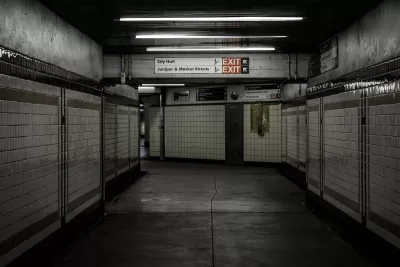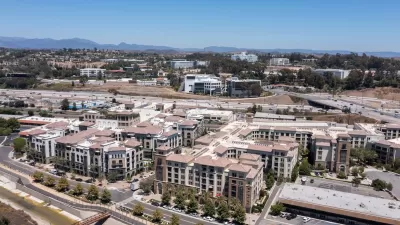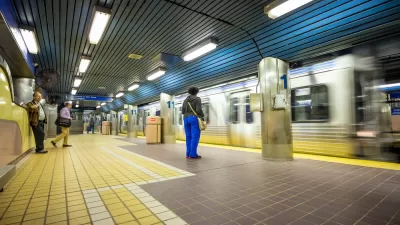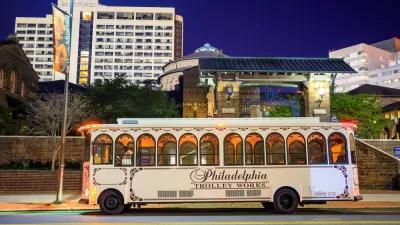A team of researchers found much higher levels of particulate matter inside the City Hall subway station than on the street-level sidewalks directly above the station.

A study by Villanova University researchers Kabindra Shakya and Aimee Eggler reveals that air quality in downtown Philadelphia’s City Hall subway station is significantly worse than the street-level sidewalks in the same location.
As the authors explain in an article in The Conversation, “We focused on this station because our previous study found it to have the highest levels of particulate matter among 12 Philly subway stations we measured on the busy Market-Frankford or Broad Street lines.” They found 10 times more black carbon — also known as soot — in the station than outdoors, generated by the subway system itself.
“Limited access to outside air, the frequency of trains, a large number of passengers and its location in the heart of Center City may be some of the reasons for the high concentrations of particulate matter at the 15th Street station,” the authors add.
The city could improve air quality in the subway by replacing aging equipment and rails, adding platform screen doors, and increasing ventilation. However, the authors stress that they are not recommending people avoid the subway. “Air pollution levels are highly variable across stations and over time, and commuters spend relatively short periods of time inside subway stations.”
FULL STORY: Air pollution inside Philly’s subway is much worse than on the streets

Planetizen Federal Action Tracker
A weekly monitor of how Trump’s orders and actions are impacting planners and planning in America.

Congressman Proposes Bill to Rename DC Metro “Trump Train”
The Make Autorail Great Again Act would withhold federal funding to the system until the Washington Metropolitan Area Transit Authority (WMATA), rebrands as the Washington Metropolitan Authority for Greater Access (WMAGA).

The Simple Legislative Tool Transforming Vacant Downtowns
In California, Michigan and Georgia, an easy win is bringing dollars — and delight — back to city centers.

The States Losing Rural Delivery Rooms at an Alarming Pace
In some states, as few as 9% of rural hospitals still deliver babies. As a result, rising pre-term births, no adequate pre-term care and "harrowing" close calls are a growing reality.

The Small South Asian Republic Going all in on EVs
Thanks to one simple policy change less than five years ago, 65% of new cars in this Himalayan country are now electric.

DC Backpedals on Bike Lane Protection, Swaps Barriers for Paint
Citing aesthetic concerns, the city is removing the concrete barriers and flexposts that once separated Arizona Avenue cyclists from motor vehicles.
Urban Design for Planners 1: Software Tools
This six-course series explores essential urban design concepts using open source software and equips planners with the tools they need to participate fully in the urban design process.
Planning for Universal Design
Learn the tools for implementing Universal Design in planning regulations.
Smith Gee Studio
City of Charlotte
City of Camden Redevelopment Agency
City of Astoria
Transportation Research & Education Center (TREC) at Portland State University
US High Speed Rail Association
City of Camden Redevelopment Agency
Municipality of Princeton (NJ)





























